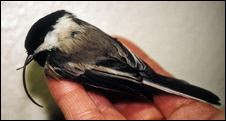
(AP) Scientists at the University of Nevada, Reno are scrutinizing seismic readings and studying damage at residents' homes to try to figure out what's happening beneath the earth's surface under a northwest Reno neighborhood rocked by a seemingly endless string of earthquakes...
...the shaking is unusual, seismologists say, because the intensity of the quakes has increased over the past few weeks. Generally, earthquakes tend to occur and are followed by smaller aftershocks.
In this case, the earth's rumblings have continued unabated, with barely negligible bumps occurring often minutes apart, followed by occasional larger shakers.
It's impossible to know if the temblors are foreshocks of a bigger quake to come, or aftershocks of what has been, experts said.
Up until April 15, sizable quakes that could be felt were occurring about once every third day.
Then, the rate increased, with about three, 2.0 or larger incidents occurring daily.
On April 24, when the first 4.2 quake was registered, "all of a sudden we were seeing 20 (of the magnitude) 2s and larger per day," said state geologist Jon Price.
"This is an exceptionally vigorous sequence of earthquakes," Price said.
During the past week alone, more than 500 occurrences have been recorded.
Most recently, two measuring 3.1 and 3.2 in magnitude occurred around 11 p.m. Monday. Another 3.1 was recorded at 9:15 a.m. Tuesday.
The largest so far was a 4.7 quake that was registered at 11:40 p.m. Friday. It was preceded 11 seconds earlier by a 3.3 quake, and followed 3 minutes later by one registering 3.4.
The temblors sent goods flying off shelves, cracked walls, broke glass and collapsed part of a water flume west of Reno. There were no injuries.
They are mostly shallow, occurring just beneath the surface to within a mile or two...
Mapping of the quakes shows they are clustered around the Mogul and Somersett neighborhoods in northwest Reno, in an area about 2.5 miles long and 1/3 of a mile wide...





